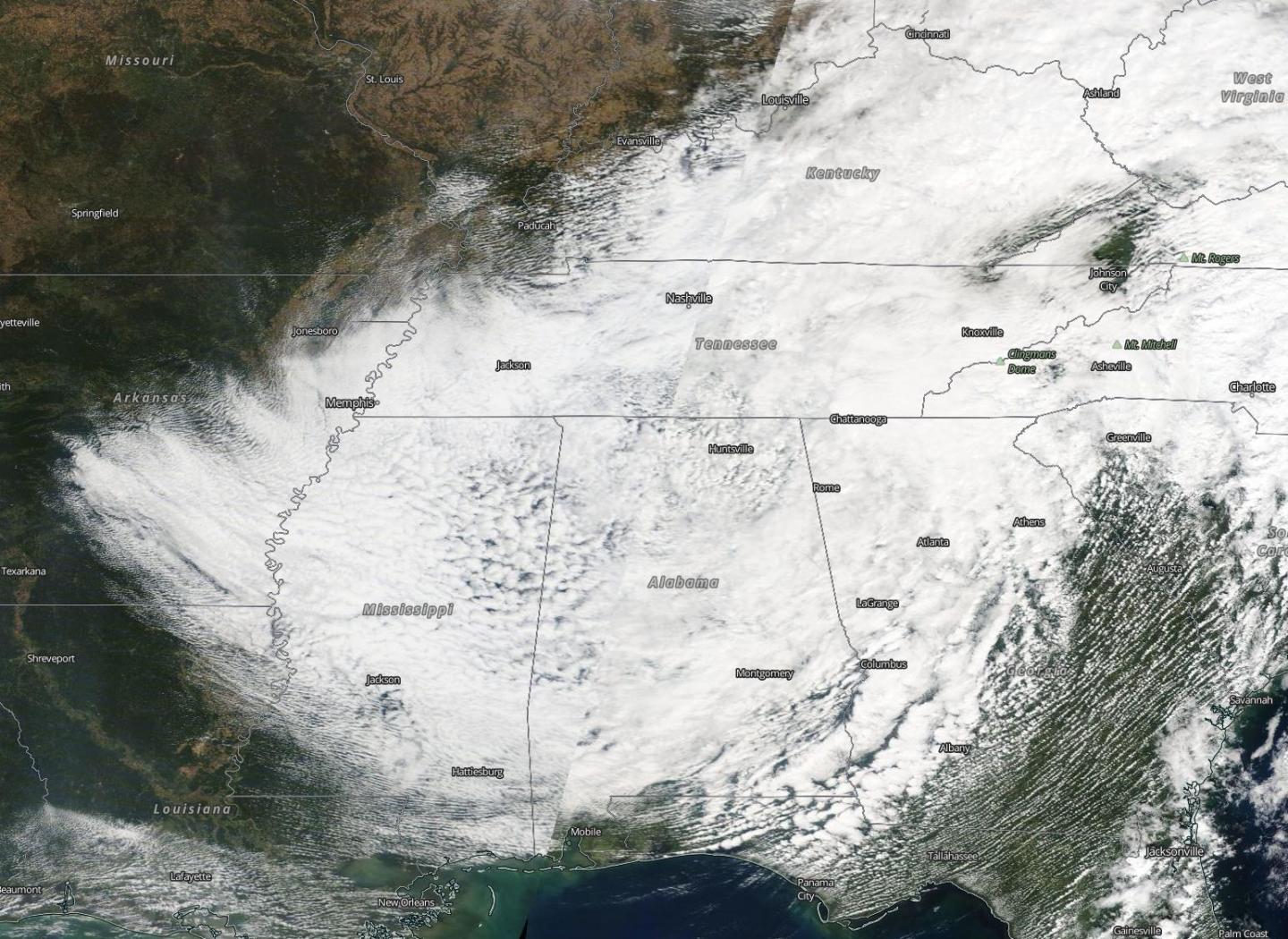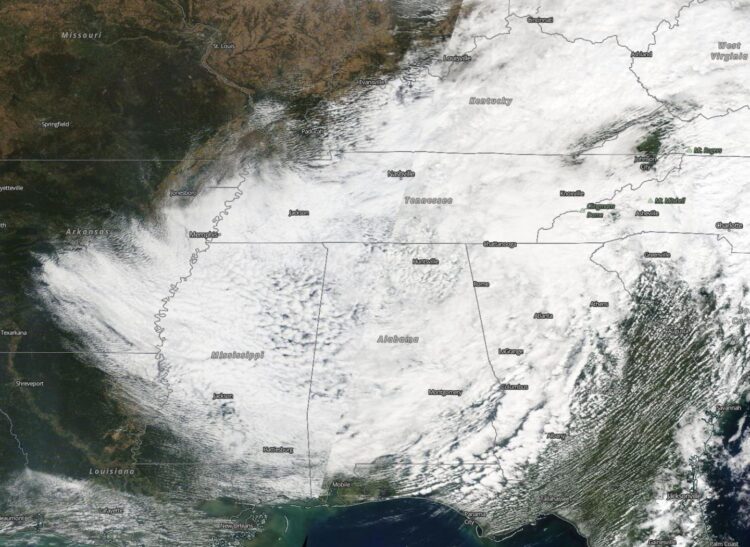
Credit: Image Courtesy: NASA Worldview, Earth Observing System Data and Information System (EOSDIS).
NASA’s Terra satellite obtained visible imagery as Tropical Storm Delta made landfall in Louisiana and moved northeastward soaking the U.S. southeast and Mid-Atlantic states.
NASA Satellite View: Delta’s Organization
The Moderate Resolution Imaging Spectroradiometer or MODIS instrument that flies aboard NASA’s Terra satellite captured a visible image of Tropical Storm Delta on Oct. 11 at 1:30 p.m. EDT. The storm still appeared circular in imagery. At the time, it was centered over northern Alabama. At the time Terra passed overhead, Delta had weakened to a tropical depression with maximum sustained winds near 25 mph (35 kph).
Visible imagery from NASA’s Terra satellite captured from Oct. 9 to Oct. 12 were compiled into an animation. The animation showed the landfall and movement of Tropical Storm Delta. Delta dissipated over the southeastern U.S. and its remnants moved into the Atlantic states. The animation was created using NASA’s Worldview product at NASA’s Goddard Space Flight Center in Greenbelt, Md.
Delta’s Landfall on Oct. 9
National Weather Service Doppler radar imagery, Air Force Reserve Hurricane Hunter aircraft data, and surface observations indicated on Oct. 9 that Delta made landfall near Creole, Louisiana, around 7 p.m. EDT with estimated maximum sustained winds of 100 mph (155 kph). Delta was a category 2 hurricane on the Saffir-Simpson Hurricane Wind Scale.
Delta’s Final Advisory
The National Hurricane Center (NHC) issued the final advisory on Delta at 11 p.m. EDT on Oct. 11 (Oct. 12 at 0300 UTC). At that time, the center of Post-Tropical Cyclone Delta was located near latitude 34.5 degrees north and longitude 84.1 degrees west. It was just 60 miles (95 km) north-northeast of Atlanta, Georgia. The post-tropical cyclone was moving toward the east near 15 mph. Maximum sustained winds were near 15 mph (30 kph) with higher gusts.
NHC said, “Some further weakening is possible tonight as a new surface low develops in the Carolinas, and Delta’s surface low is expected to be absorbed by this new low pressure area on Monday, Oct. 12.”
About NASA’s Worldview and Terra Satellite
NASA’s Earth Observing System Data and Information System (EOSDIS) Worldview application provides the capability to interactively browse over 700 global, full-resolution satellite imagery layers and then download the underlying data. Many of the available imagery layers are updated within three hours of observation, essentially showing the entire Earth as it looks “right now.”
NASA’s Terra satellite is one in a fleet of NASA satellites that provide data for hurricane research.
Tropical cyclones/hurricanes are the most powerful weather events on Earth. NASA’s expertise in space and scientific exploration contributes to essential services provided to the American people by other federal agencies, such as hurricane weather forecasting.
For updated forecasts, visit: http://www.
By Rob Gutro
NASA’s Goddard Space Flight Center
###
Media Contact
Rob Gutro
[email protected]
Original Source
https:/





